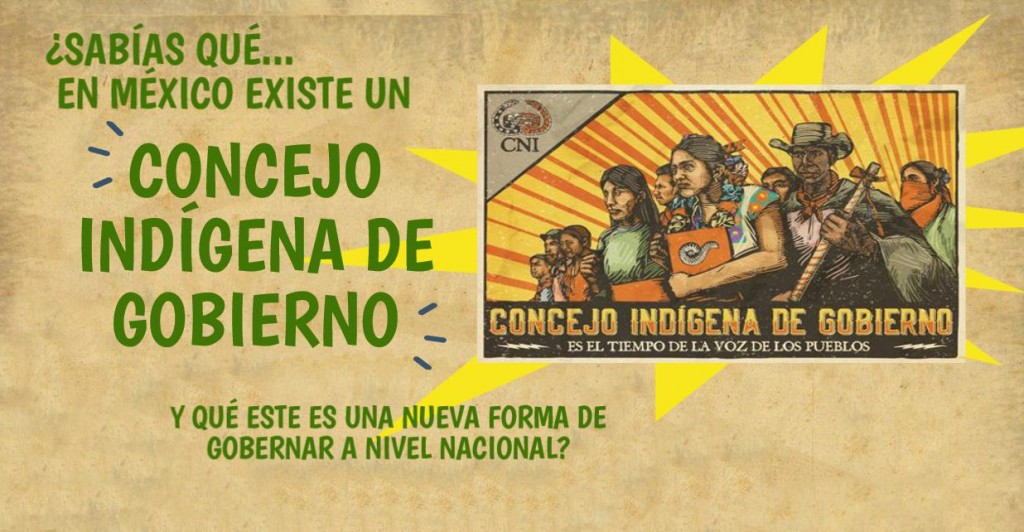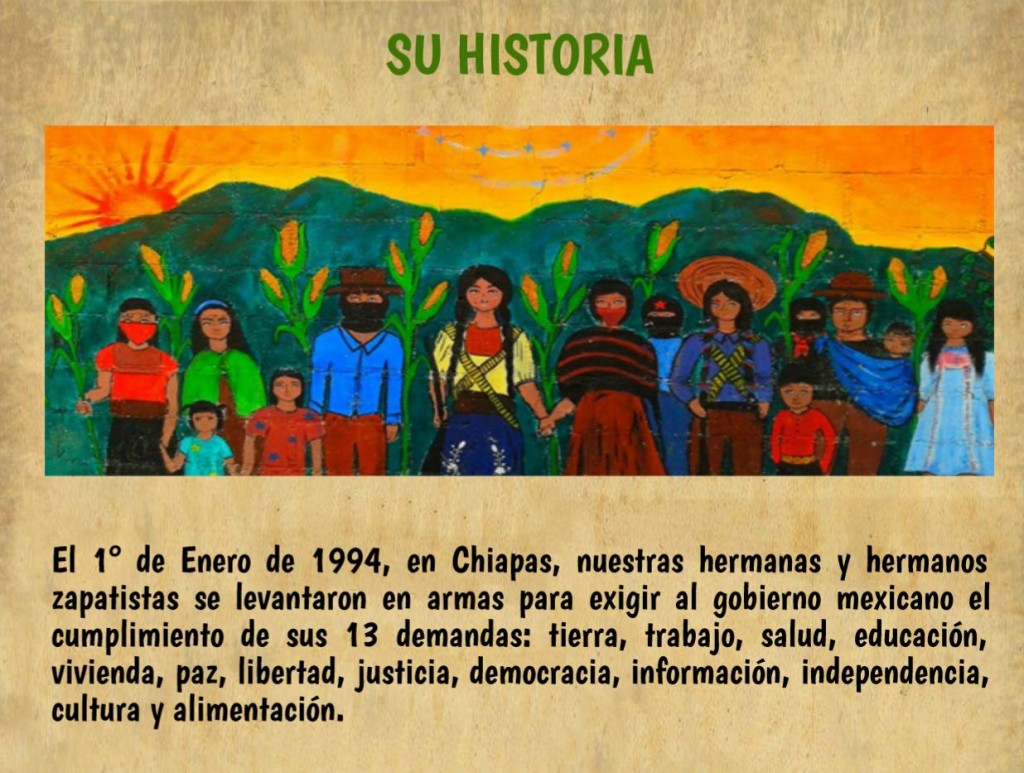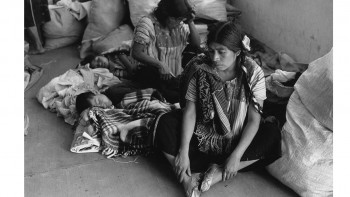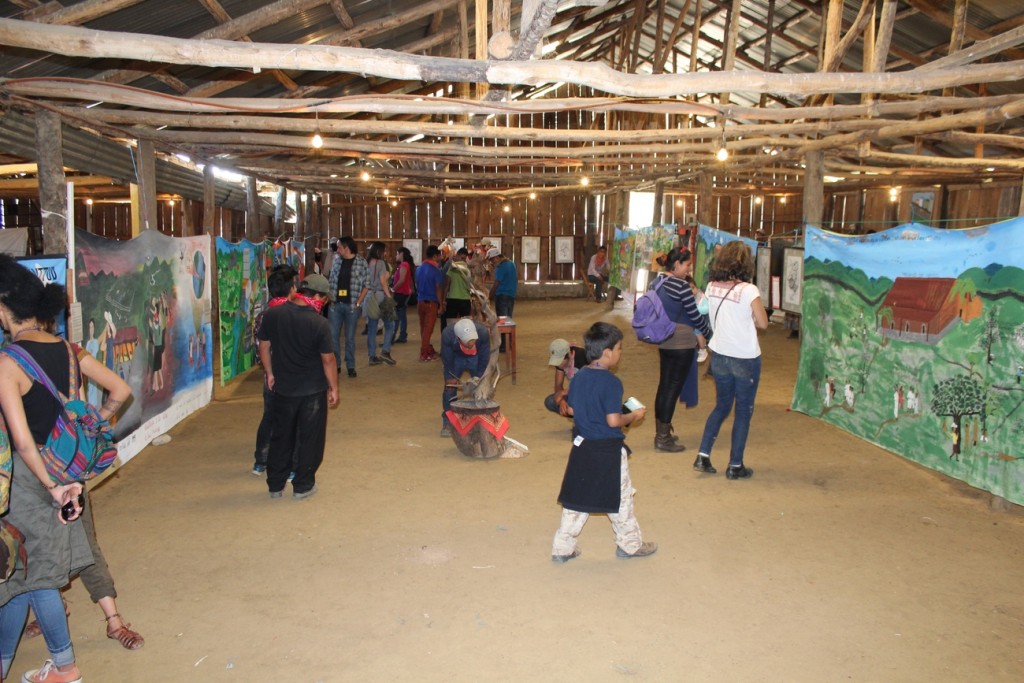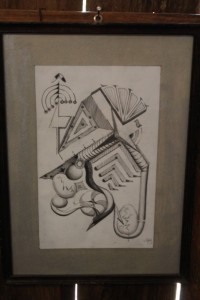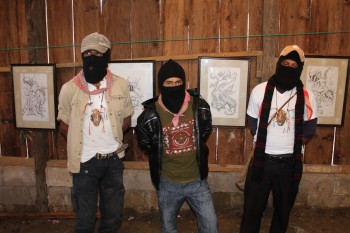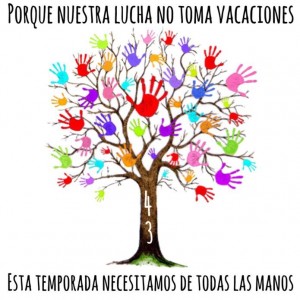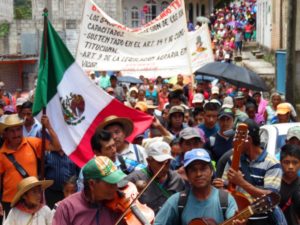
Autonomy and Resistance
(Español) Comunidad Candelaria El Alto de Chiapas denuncia amenazas
Sábado 26 de Agosto del 2017.
Comunidad de Candelaria el Alto municipio de Venustiano Carranza Chiapas México
Adherentes a la Sexta Declaración de la Selva Lacandona del Ejercito Zapatista de Liberación Nacional, EZLN.
Denuncia publica.
Al CNI Congreso Nacional Indígena
A las Juntas de buen Gobierno
A la Sexta Nacional e Internacional
A los Organismos Defensores de derechos humanos
A los medios libres de comunicación
A todo el pueblo de Mexico y el mundo
Por este medio denunciamos lo que esta pasando en nuestra comunidad de Candelaria el Alto,
El 28 de junio de este año,personas que simpatizan a nuestra organización nos dieron el aviso que habían visto 6 sujetos fuertemente armados con armas de alto poder muy cercano del lugar donde resguardamos nuestras tierras que hemos venido defendiendo durante varios años, predio identificado como” el Desengaño” dentro de estos posibles rumores mantenemos un registro y estamos investigando
El pasado 26 de Julio del presente año, siendo la 1:30 de la tarde compañeros nuestros que resguardan las tierras se percataron viendo dos sujetos cubiertos el rostros con pasamontañas aproximadamente a unos 300 metros dichos sujetos estaban armados y al darse cuenta que habían sido vistos por nuestros compañeros en ese instante se retiraron del lugar. Minutos después uno de nuestro compañeros llego al lugar donde ellos se encontraban y vio en el suelo letras escritas que decía CUIDADO. Esta palabra cuidado para nosotros es preocupante por los rumores antes mencionados, entendemos que están haciendo un plan de reprecion, o pretenden matar a uno de nuestros compañeros.
Denunciamos que en la madrugada del día martes 22 de agosto siendo la 1:30 am llegaron 6 sujetos, 2 personas a bordos de una moto y 4 mas en un coche, se mantuvieron como 10 minutos dentro de nuestra comunidad. Para nosotros son personas sospechosas y luego se fueron.
El día de ayer 24 de agosto siendo 5 de la tarde se acercaron dos personas, de nombres José Luis de la Cruz Gonzales y Vicente Ramírez alias el poli, estas dos personas han llegado en este lugar donde resguardamos. Han llegado para cortar maderas para leña y negociarlo, las otras dos veces se les a dicho que se retiren de dicho lugar. Nosotros hicimos investigación y confirmamos que es trabajador de un cacique y terrateniente de la región.
Para nosotros al seguir insistiendo estas personas de nombre José Luis de la Cruz Gonzales y Vicente Ramírez de llegar al lugar donde resguardamos, consideramos que estamos siendo vigilados o es una estrategia de observacion en contra nuestra, para caer en provocación.
Ante esta situación consideramos que es por falta de voluntad del estado en darle solución a este problema y hacemos responsables a las autoridades de cualquier agreción que podamos sufrir
Por lo tanto pedimos a la Sexta Nacional e Internacional que estén pendientes de los hechos y también estaremos informando de lo que ocurra.
ATENTAMENTE
Comunidad organizada Candelaria el Alto.
Adherentes a la Sexta Declaración de la Selva Lacandona
Iniciativa del EZLN.

